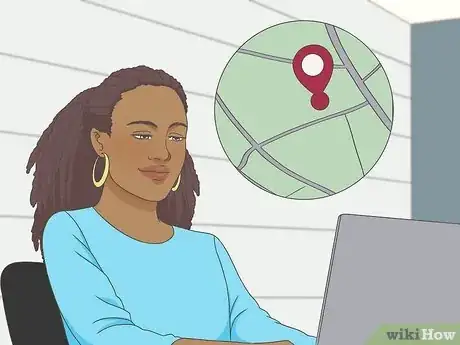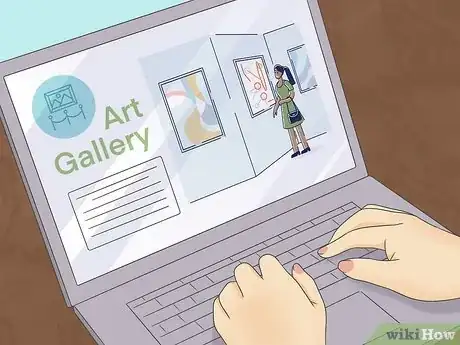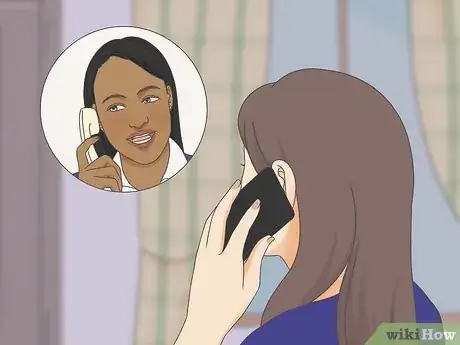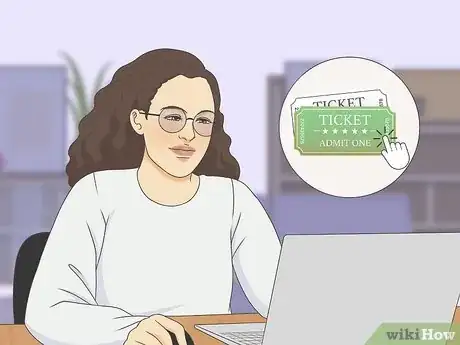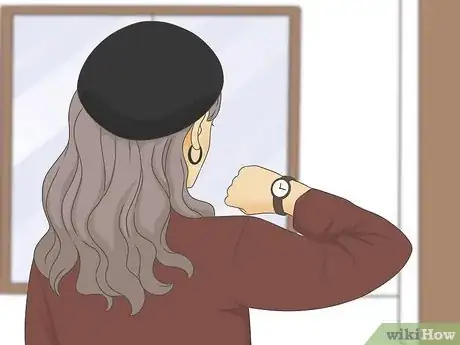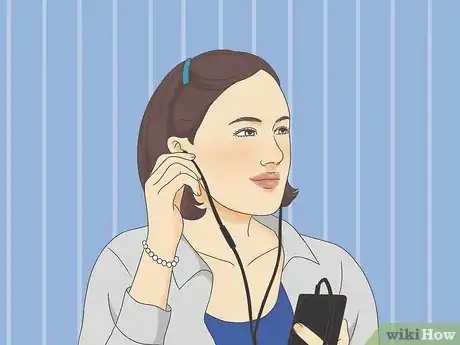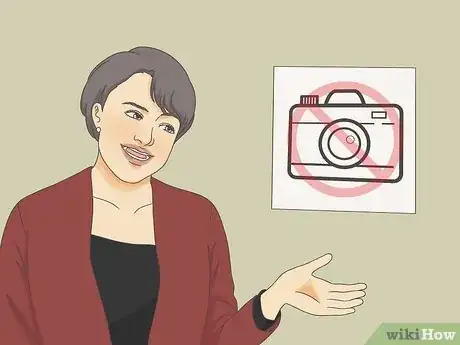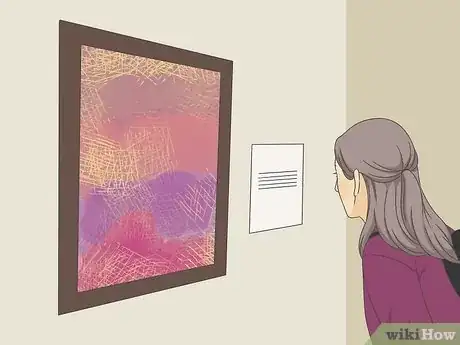This article was co-authored by wikiHow Staff. Our trained team of editors and researchers validate articles for accuracy and comprehensiveness. wikiHow's Content Management Team carefully monitors the work from our editorial staff to ensure that each article is backed by trusted research and meets our high quality standards.
There are 7 references cited in this article, which can be found at the bottom of the page.
This article has been viewed 73,496 times.
Learn more...
Visiting an art gallery is a great activity if you want to better understand art. To get the most out of your visit, prepare ahead of time and then ask questions and interact with the gallery employees. At the gallery, enjoying the art and taking your time with the pieces that speak to you will ensure that you have a meaningful, vibrant experience. After your visit, you can reflect on what you saw with a friend, or research your favorite pieces online to learn more about the artist’s work.
Steps
Preparing for Your Visit
-
1Decide what kind of art gallery you want to visit. Each gallery will have a speciality, whether it be classic or contemporary art, and knowing what kind of art you enjoy most will be important when making your decision. Contemporary art galleries will be very different than classical art galleries in both style and aesthetic.[1]
-
2Use an online search engine to find an art gallery near you. Depending on your city or town, there may be more than one option when searching for an art gallery. Visit each gallery’s website to determine which one will fit your needs and tastes best.[2]
- If you want to travel out of town, decide on a location and research which museums are in the area or decide to travel to a famous museum of your choice.
Advertisement -
3Browse the gallery’s collection online. Take a look at the gallery’s website in order to get an idea of what kind of art you will be viewing. Many galleries will have a full list of the artists currently being shown. Look for photographs of the pieces being shown and read some of the descriptions of the gallery’s exhibits.
- If you are visiting a locally owned gallery, you may be able to contact the gallery owner directly with any questions.
-
4Find out if you need to make an appointment with the gallery ahead of time. Although most large galleries do not require appointments, other small galleries will require you to call ahead. When speaking with the gallery owner or employee, ask if you are required to purchase any art, as some small galleries rely on these purchases.
- You can also check the gallery’s website to find this information ahead of time.[3]
-
5Purchase your ticket online if necessary. The best way to save time and avoid lines during your gallery visit is to purchase your ticket in advance. Although some galleries will have free admission, other, more popular galleries will charge an entry ticket. Buying your ticket online will save you time on the day of your visit.
- Ticket costs will depend on the size of the gallery you are visiting. If the gallery you plan to visit is showing the artwork of famous artists, the tickets may cost more.
-
6Decide how much time you are able to spend at the gallery. The amount of time you spend visiting an art gallery should depend on how large the gallery is and how much of the collection you care to see. Some art galleries are so large that it can be difficult to view everything in one trip, but others are small and locally owned, so they will not take nearly as long.
- If you are unable to spend an entire day at the gallery, make a plan and view the art exhibits that best coincide with your interests.
Getting the Most out of Your Experience
-
1Wear comfortable walking shoes. You could be doing a lot of walking during your gallery visit, and having uncomfortable shoes can have a negative impact on your experience. Choose footwear that you know is comfortable and made for walking long distances to help avoid distractions while you enjoy the gallery’s art.[4]
-
2Purchase an audio-guided tour if they are available. Although smaller galleries will not have guided tours, some large galleries will offer audio tours that will give you information on specific pieces and exhibits. Use the audio tour to help you understand each piece on a deeper level, enhancing your viewing experience and bringing you closer to each piece.[5]
- Some audio tours will come with an extra cost, but others will be available for free on a downloadable phone app.[6]
- The audio tours will pace your viewing experience and help you slow down for the art that interests you the most.
-
3Ask about the gallery’s photography policy before taking photos. Some galleries do not allow photography, and nearly every gallery will ask you to turn off the camera’s flash to preserve the art. You may find this information on signs throughout the gallery, or you can ask a gallery employee directly.[7]
- If you are allowed to take photos of the art, be sure to take photos of the labels too. This way you will know the name of the piece and the name of the artist when viewing the photograph later on.[8]
-
4Interact with gallery employees if you have questions. These people are there to help you and will be excited to answer your questions. You may ask things specific to a certain piece that speaks to you, or ask for directions and clarifications about the gallery rules.[9]
- If the gallery you are visiting is small, you may be able to speak with the gallery owner or artist directly.
Viewing the Art
-
1Read the descriptions at the beginning of each exhibit. Each exhibit will have a detailed paragraph or artist statement. These will provide you with a history of the artist or an explanation of what the artist is attempting to say with the exhibit. Use these descriptions to guide your thinking and inform the way the art impacts you.[10]
-
2Bring a notebook and write down your favorite art pieces and artists. If you are not allowed to take photographs in the gallery, taking notes about your favorite art pieces will enhance your experience and help you reflect on your favorite pieces after you leave. Write down the name of the piece, the artist’s name, and describe the art as best you can.[11]
- Describe the medium used by the artist, the type of colors or brushstrokes that are used, and the subject matter of the piece.
- You can also try to recreate your favorite pieces as sketches in your notebook to boost your own creativity.
-
3Take your time viewing the pieces that speak to you. Keep yourself from rushing through the gallery by sitting and experiencing certain pieces for a longer period of time. Although slowing down will make it more difficult to visit every exhibit in a large gallery, allowing yourself to really spend time with your favorite pieces will be more memorable and meaningful.
- Allow yourself to walk through certain exhibits more than once to really get to know the different pieces that make up the show.
-
4Purchase a souvenir at the gift shop. Many art galleries will have a gift shop where you can buy small souvenirs, rather than entire pieces of art. These gift shops will have postcards with some of the art that is featured in the gallery, as well as art books and coffee mugs to help you remember your experience. Either purchase something for yourself or purchase something as a gift for a friend or loved one.[12]
- Purchasing something at the gift shop is a great way to support the gallery.
-
5Reflect on the experience with a friend. With the notes or photos you took during your visit, talk with a friend or loved one about your experience. Share and describe your favorite art pieces and consider how they made you feel, or why they stood out to you. If you found a new artist that you particularly enjoyed, look up more of their work online and consider supporting the artist.[13]
- Understanding why you connected with certain art pieces will help you plan your next trip to a gallery.
Community Q&A
-
QuestionHow you dress up when visiting the art gallery?
 Community AnswerMost galleries do not have a dress code, so you do not have to dress in any particular way during your visit.
Community AnswerMost galleries do not have a dress code, so you do not have to dress in any particular way during your visit.
References
- ↑ http://www.artofmanliness.com/2016/02/04/12-tips-for-getting-the-most-out-of-your-trip-to-a-museum/
- ↑ http://www.artofmanliness.com/2016/02/04/12-tips-for-getting-the-most-out-of-your-trip-to-a-museum/
- ↑ http://www.artbusiness.com/osoquugalsys.html
- ↑ https://nmaahc.si.edu/top-10-things-grand-opening
- ↑ http://www.artofmanliness.com/2016/02/04/12-tips-for-getting-the-most-out-of-your-trip-to-a-museum/
- ↑ http://www.metmuseum.org/visit/audio-guide
- ↑ https://www.youtube.com/watch?v=drrBd1bCiW0&feature=youtu.be&t=1m28s
- ↑ https://www.youtube.com/watch?v=drrBd1bCiW0&feature=youtu.be&t=1m28s
- ↑ https://www.youtube.com/watch?v=drrBd1bCiW0&feature=youtu.be&t=1m20s
- ↑ https://www.youtube.com/watch?v=drrBd1bCiW0&feature=youtu.be&t=2m28s
- ↑ http://www.artofmanliness.com/2016/02/04/12-tips-for-getting-the-most-out-of-your-trip-to-a-museum/
- ↑ http://www.artofmanliness.com/2016/02/04/12-tips-for-getting-the-most-out-of-your-trip-to-a-museum/
- ↑ http://www.artofmanliness.com/2016/02/04/12-tips-for-getting-the-most-out-of-your-trip-to-a-museum/

